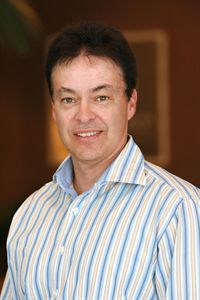
JACKSON: In announcing your appointment in March last year, Suncorp’s chief executive John Mulcahy set the expectation with the market that significant synergies would be achieved in IT as part of the Suncorp/Promina merger. What are your main integration objectives, and where are the key areas in IT that you see cost savings can be achieved?
SMITH: There is a significant program of work across business technology that is contributing to the synergy benefits that we have flagged to the market. There are a number of major components to our business technology strategy – these are intrinsically linked to Suncorp’s overall business strategy and those of its three distinct lines of business which are the insurance, banking and wealth management businesses. First we want to select the focus areas that generate the most significant business outcomes and the quickest benefits realisation. These areas are in insurance claims management, pricing and analytics as well as the overall internet channel for both intermediated (or broker business) and the internal sales and service channel. In addition, we are consolidating IT infrastructure by moving four data centres to two; as well as consolidating our hardware and software computing assets; and rolling out a consistent environment for our employees which allows them to collaborate effectively.
JACKSON: What have been the biggest challenges you’ve faced in the role so far and how have you addressed those challenges?
SMITH: Suncorp is an incredibly complex business – given its size, geographical spread and mix of businesses – and I joined at a critical time in its strategic development as it began the integration process following the Promina merger. The biggest challenge was the scale of the integration project but, as I mentioned earlier, we focused on the areas that would generate the most significant business outcomes and the quickest benefits realisation. This approach has enabled us to capture the business technology synergy benefits we had targeted for this stage of the integration.
JACKSON: You have built a reputation as a CIO willing to embrace cutting-edge technologies. What are the new and emerging technologies you are currently exploring for Suncorp and why?
SMITH: I’m not just focused on embracing cutting edge technologies, I’m actually passionate about understanding what the best companies in the world are doing and applying those lessons to my own business. Since I’ve been at Suncorp, the business technology team has implemented a major change management program shifting from waterfall process to Agile, minimising risk and cycle times to deployment at a lower cost. This approach first started with software product development around ten years ago and is now starting to make significant headway in major corporates. At Suncorp, we are also passionate about simplifying our landscape and using open standards based technology to drive innovation.
JACKSON: To what extent do you think Web 2.0/next-generation Web platforms will influence the IT agenda of the banking sector as a whole over the next 12 months?
SMITH: We’re focused on deploying collaboration environments – such as Sharepoint – internally to drive productivity by sharing content, experiences and IP in a more efficient manner.
JACKSON: What do you believe is the best approach for core systems: to renovate or innovate?
SMITH: The Promina transaction brought together numerous strong businesses and brands, many of which had separate IT infrastructures as you would expect. This meant there was significant supplication of similar systems and minimal leverage of shared components. Throughout the integration process we selected the best practices and solutions to package common services into re-usable propositions and have deployed reusable integration components across multiple brands. We have made excellent progress on our ultimate goal of a single consolidated technology infrastructure environment and a simplified applications environment which consolidates core systems.
JACKSON: Having also served as CIO at Telstra, how does the banking IT set-up compare to Telstra’s model?
SMITH: Suncorp and Telstra are very different companies operating in completely different industries so it’s particularly difficult to provide a meaningful comparison of their respective IT set-ups and strategic models. What I can say though is that both companies are fortunate to have dedicated IT teams that are completely customer-focused and have the capability to consistently provide innovative solutions to complex business needs in a short space of time.
JACKSON: What are the three critical trends you think will shape IT agendas in 2008 and beyond? Why?
SMITH: IT agendas will be dominated by a focus on business benefits and achieving benefits realisations as quickly and efficiently as possible, without sacrificing reliability. Businesses will increasingly leverage and reuse assets rather than trying to start from scratch.
JACKSON: Every IT leader, particularly at your level, has a legacy they wish to be remembered for. From the perspective of a CIO, what is yours?
SMITH: First and foremost – an ability to deliver on commitments. At Suncorp, for example, we have a large integration program and my business technology group will deliver the results. In addition to delivering results, however, we want to create the most productive environment possible for our people so, in addition to participating in successful projects, they can also grow professionally and personally with experiences and friendships they can take with them for the rest of their lives.





